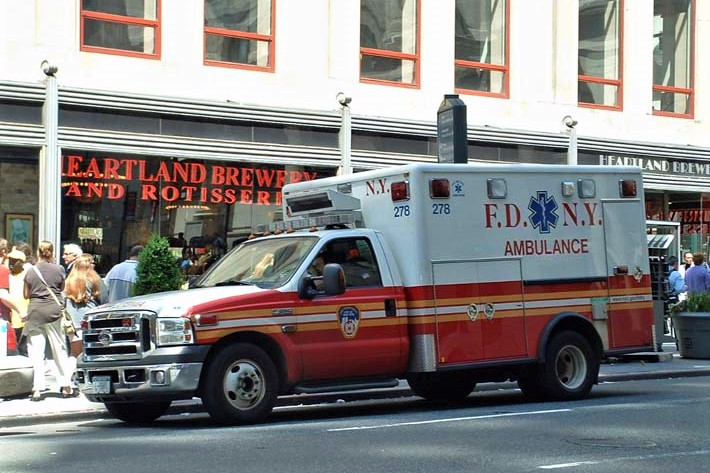
EMS in New York, the impact of COVID-19 on emergency services 9-1-1: study supported by New York City Fire Department
COVID-19, what impact on emergency transport on the EMS ambulance of 9-1-1 New York? This question was answered by a study conducted by David J. Prezant and other members of the Bureau of Health Services and the FDNY World Trade Center Health Program, Fire Department of the City of New York, Brooklyn, New York, USA.
More properly to describe the impact of the COVID-19 pandemic on the New York City (NYC) 9-1-1 emergency medical services system and assess the effectiveness of pandemic planning to meet growing demands.
COVID-19 impact on New York City’s EMS network: the US Fire Department study
To achieve this result they conducted a longitudinal analysis of NYC 9-1-1-1 EMS call volumes, call types, and response times during the COVID-19 peak-period (March 16-April 15, 2020) and the post-surge period (April 16-April 31, 2020) compared to the same periods in 2019.
Data analysis showed that the EMS received 30,469 more calls from March 16 to April 15, 2020 compared to March 16 to April 15, 2019 (161,815 versus 127,962; P < 0.001).
On 30 March 2020, call volumes increased by 60% compared to the same date in 2019.
Most were for respiratory (relative risk [RR] = 2.50; 95% confidence interval [CI] = 2.44-2.56) and cardiovascular (RR = 1.85; 95% CI = 1.82-1.89) call types.
The percentage of high-acid and life-threatening call types increased compared to 2019 (42.3% vs. 36.4%).
Planned interventions to prioritize high-intensity calls led to an increase in average response time of 3 minutes compared to an increase of 11 minutes for low-intensity calls.
After the intervention, the EMS received fewer calls than in 2019 (154,310 vs 193,786; P < 0.001).
New York City, COVID-19 highlighted the importance of pandemic crisis planning
The study conducted by members of the Bureau of Health Services and the FDNY World Trade Center Health Program, Fire Department of the City of New York, found that the increase in the volume of EMS 9-1-1 interventions was primarily due to respiratory and cardiovascular disease.
In Phase 2, the number of calls returned to pre-pandemic levels.
“Our results – the authors of the study write – highlight the importance of pandemic crisis planning at the EMS level.
The New York Firefighters study on COVID-19:
New York City Fire Department 911 study covid-19 EMS covid-19Read Also:
Firefighting Drone: The New Intelligent Aerial Firefighting Solution
Germany, Hanover Fire Brigade Test Fully Electric Ambulance
COVID19 In France, Even The Firefighters On The Ambulances: The Case Of Clemont-Ferrand


